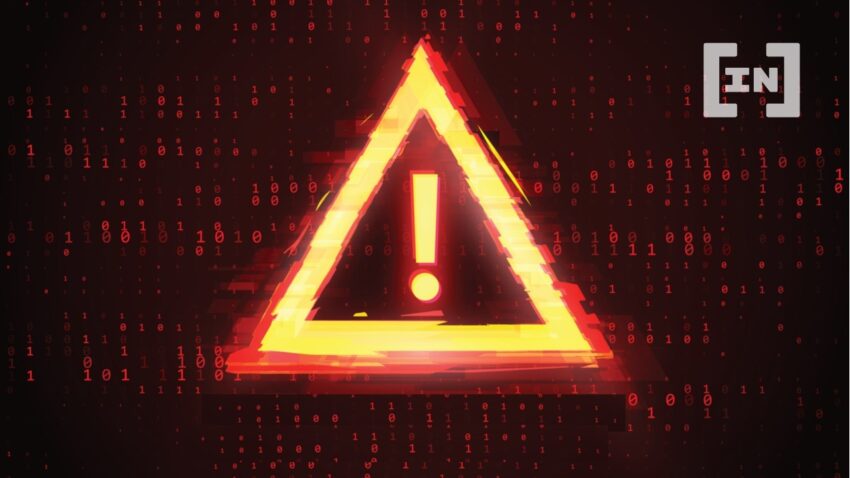
2022-10-19 01:54 |
Trustcheck: Web3 Builders Inc. announced the launch of what it calls a “free” cyber security tool to protect users against crypto scams, hacks and fraud. It comes as incidents of online theft have risen sharply in 2022. Hackers have stolen over $2 billion in crypto this year.
The TrustCheck tool is a Chrome browser plug-in. It warns crypto users when suspicious activity is detected on their desktop computers or laptops.
Riccardo Pellegrini is the CEO of Web3 Builders, who made the plugin. “First, it detects known scam sites and will warn and redirect the user to safety,” Pellegrini told BeInCrypto. “Second, if a site is not identified as a known scam, TrustCheck examines the site’s source code for wallet drainer code.”
“When these are detected, the user is similarly warned and redirected to safety.” TrustCheck also analyzes data from “tens of thousands of scams and millions of wallets” via machine learning in order to curb fraudulent transactions.
“It then displays the results to the user by offering an explanation of what’s about to happen in the transaction and showing a warning in the event it detects something off. Users are free to decide whether to stop the transaction or proceed,” added Pellegrini.
Web3 Builders: What is it?Web3 Builders Inc. is made up of a group of Ethereum decentralized applications (dApps) developers from diverse backgrounds. It includes builders from places like Harvard, MIT, Coinbase and Amazon Web Services. It says to offer B2C and B2B software solutions.
“We are freelancers who met online while collabing on various decentralized projects since 2017,” the team says on its website. Previously, the outfit built staking platform Stake MRI, non-fungible token standard ReserverETH, DeFi platform StaticPower and others.
On Tuesday, Web3 Builders announced it raised $7 million in seed funding from Road Capital, OpenSea Ventures, and other cryptocurrency venture capitalists, as per a statement shared with BeInCrypto.
According to Pellegrini, TrustCheck helps prevent ethereum-based wallet drainer transactions, risky permissions approval grants and rug pulls. It also deals with “dangerous signing requests, looping spam transactions” and others.
Once the security tool is installed, users do not need to take any further action to prevent an attack from taking place. “This is why we call the product ‘zero-click’..it will run in the background,” said Pellegrini.
“In the event a user arrives at a known phishing website with wallet drainer code, it will issue a warning. If a user attempts a dangerous transaction…TrustCheck can detect it, and inform the user that they are about to, for example, grant permission to transfer all NFTs from their wallet.”
Crypto hacks top $2 billion in 2022The TrustCkeck security tool comes as incidents of crypto theft have risen sharply in 2022.
Blockchain security company PeckShield says hackers have pilfered more than $2.32 billion in over 135 exploits, from the decentralized finance (DeFi) industry so far this year. The figure is 50% higher than what was stolen from the entire sector for the whole of 2021.
Over the years, online thieves have employed a variety of tactics to carry out their work. The most used methods of attack include honeypot, exit scam, exploit, access control, and flash loan, says the REKT Database. A great number of the hacks take place at the protocol level.
As crypto markets continue to grow, so have incidents of theft. First-time crypto investors or users are usually at risk. Experts regularly speak on what retail investors could do to make their money as safe and secure as possible.
Advice ranges from users having self-hosted cold wallets -a type of wallet not connected to the Internet – to never letting “anyone know the private keys to your wallet.”
Users have also been cautioned against using insecure Internet connections while making transactions on personal devices such as mobile phones and tablets. Oleg Belousov, CEO of digital asset exchange N.Exchange, previously told BeInCrypto:
“Believe it or not most people send their money to scammers on their own accord, meaning that social engineering (phishing) and high yield investment programs are accountable for 90% or more of the scams newcomers are falling victim to.”
Trustcheck and analysisAnalysis from TrustCheck appears to agree with this thinking. “While the biggest dollar volume hacks occur at the protocol level, based on interviewing hundreds of scam victims, it’s clear that much of the time, scams actually occur on a micro level,” said Pellegrini.
“It’s the direct message on discord and Twitter that leads to a phishing site, or approving a dangerous signature request without fully understanding its purpose that often gets users.”
“These types of issues are what we call ‘end user security’ issues as opposed to protocol layer security. And the thing with these types of transactions is that often, they are far less frequently reported than the big hacks. Our belief is that end-user security represents one of, if not the biggest barrier to mainstream crypto adoption.
Pellegrini did not put a figure on the potential savings from the use of TrustCheck. “This is difficult to estimate. However, our hope is that with widespread adoption of scam prevention techniques, the crypto industry can help users avoid billions of dollars in future losses due to scams.”
Got something to say about Trustcheck or anything else? Join the discussion in our Telegram channel. You can also catch us on Tik Tok, Facebook, or Twitter
The post Trustcheck: Chrome Plug-in Warns Crypto Users of Suspicious Activity on Their Device appeared first on BeInCrypto.
origin »Emerald Crypto (EMD) на Currencies.ru
|
|





















